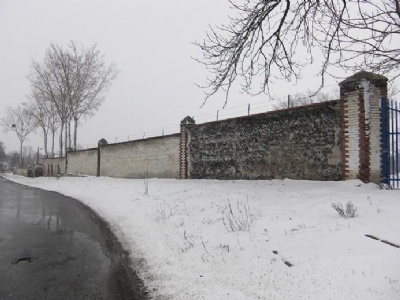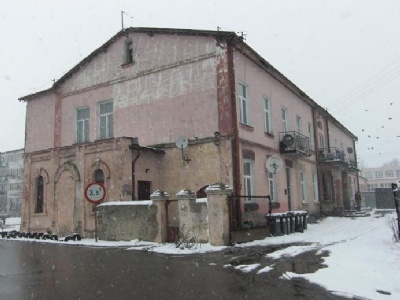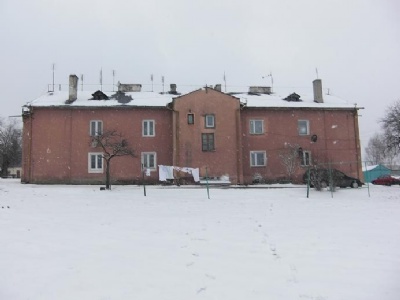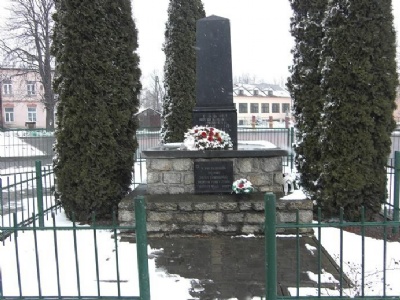Trawniki
About thirty kilometres east of Lublin lies a small town called Trawniki. It consists largely of a former sugar factory and a railway station. However, this was the reason why the area before the Second World War had an industrial development. Thanks to the excellent rail connections, the Nazis established a prisoner-of-war camp in the factory area in 1941 for Polish and Soviet prisoners of war. Several of the prisoners were recruited by the SS for guard training and for this purpose a training camp was established within the camp. It was mainly Ukrainians who volunteered because it was seen as a better alternative to the miserable conditions that prevailed in a prisoner of war camp. These volunteers were called Trawnikis and their main duties were to serve as guards at one of the extermination camps, Belzec, Sobibor or Treblinka. There they also came to be responsible for the gas chambers (under German supervision of course). They also had the task of participating in Jewish round-ups and guarding the transportation of Jews to one of the extermination camps.
Starting in 1941, about 5,000 people had volunteered, of which about half were Ukrainians, while the rest were Russians, balts and ethnic germans. It was not infrequently a motley crowd that gladly fell into drunkenness, petty theft, looting and fornication. Their reputation among the Germans was low and both parties distrusted each other. The number of desertions was therefore relatively high among Trawnikis. Several deserters returned to their homelands, others joined partisan units, and other returned "home" to serve yet again in the Red Army. In addition to camps in the Lublin district, Trawniki served in camps elsewhere, including Auschwitz. From 1944 Trawnikis was transferred to Trieste and the Adriatic Sea, where their main task was to fight partisans, but also to serve at the Risiera di San Sabba camp in Trieste.
When the etermination camp at Belzec became operational in March 1942, a camp was established alongside the training camp in Trawniki. Here, the prisoners had to work on sorting stolen property from the Jews murdered in Belzec and later Sobibor. Although Trawniki was not an extermination camp like Belzec, Sobibor and Treblinka, the camp was under the control of SS-Obergruppenführer Odilo Globocnik. In addition to Polish jews, it also contained german, slovak and czech Jews in Trawniki. Trawniki also served as a staging point for Jews around the Lublin district and the rest of Europe before being deported to Belzec and murdered.
Himmler visited the camp July 19, 1942, during an inspection round in the Lublin district. In February 1943, the German clothing company Schultz, along with its employees (jewish prisoners), moved its business from the Warsaw ghetto to Trawniki. In May, when the jewish uprising in Warsaw was crushed, several Jews from the ghetto were deported to Trawniki. During the ”Harvest festival” in November 1943, about 10,000 Jews were murdered in Trawniki in pre-digged ditches next to the sugar factory. The prisoners who were not murdered during the ”Harvest festival” were later forced to work with the cremation of the corpses of those murdered. The camp existed until the spring of 1944 when the remaining prisoners were sent to the Starachowice labor camp in Radom district. About 20,000 prisoners passed through Trawniki during its existence, and when the camp was at its largest it covered the entire former village.
Current status: Partly preserved/demolished with monument (2011).
Location: 51°08'09.00"N 22°59'50.39"E
Get there: Car.
Follow up in books: Baldwin, Josh: Trawniki Guards (2020).





After the war the buildings used by the SS became residentials again and life got back to the way it was before the war. Several monuments has been erected at the site.